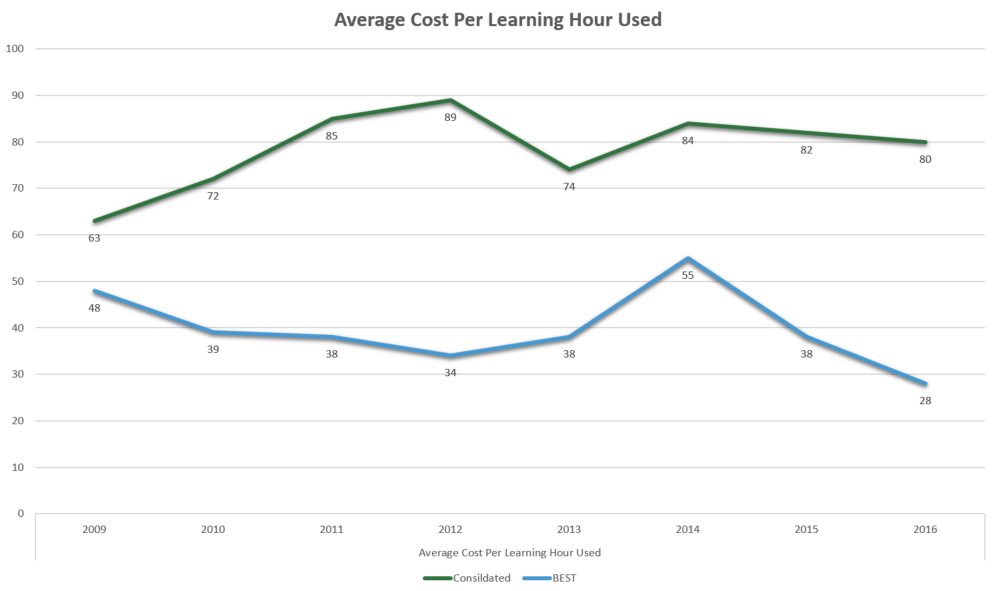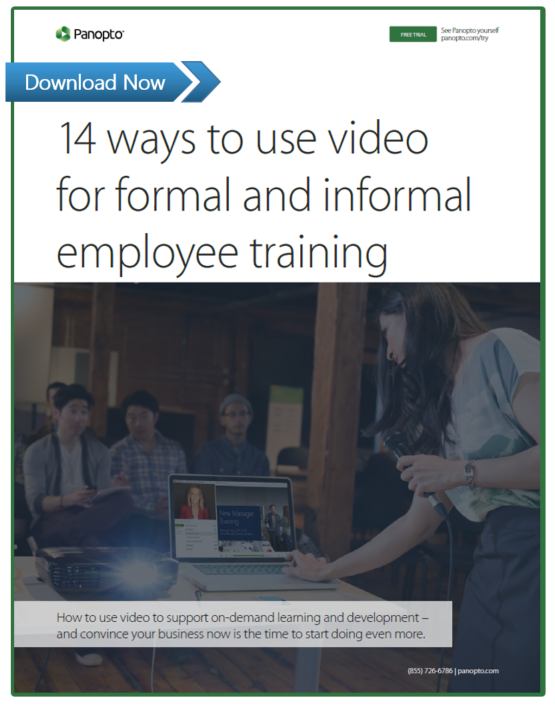- Social Learning & Knowledge Management
How L&D Leaders Are Using Video To Overcome Organizational Learning Challenges
At companies all over the world, the biggest challenges in learning and development (L&D) are, at a high level, the same challenges that every startup, every Fortune 500, and really any business needs to solve in order to be competitive in today’s rapidly changing markets:
Be better. Be faster. And do it at a lower cost than the competition can.
Given that the sole purpose of L&D is to develop employees’ skills in alignment with company goals, it’s unsurprising that L&D leaders and the organization as a whole face similar high-level challenges. Every executive, every department, every team, every manager, and every employee is responsible for finding smart ways to solve problems efficiently.
Better. Faster. Cheaper.
The good news is, when it comes to L&D, that mantra is absolutely possible. Years of research from the annual State Of The Industry report conducted by the Association for Talent Development (ATD) consistently shows that top learning organizations are able to scale learning and development to make it more efficient.
BEST organizations, as identified by ATD, demonstrate enterprise-wide success as a result of employee talent development, and they include companies of varying sizes, industries, and sectors (public, private, and nonprofit). And their success, time and again, comes down to two measures of efficiency in talent development: their Reuse Ratio, and their Cost Per Learning Hour Used.
Top Learning Organizations Have Higher Reuse Ratios
The Reuse Ratio, which compares the number of learning hours consumed in an organization to the number of learning hours available, measures how efficiently organizations deploy training materials to employees. Higher scores are better, as they indicate that more employees are taking advantage of the same content.
In 2016 the average reuse ratio for all organizations rose to 51.1. That number has climbed slowly and steadily over the last three years.
That number pales in comparison, however, to what top learning organizations are achieving. ATD BEST L&D teams hit a reuse ratio of 105.7 in 2016, more than double their peers. Developing learning materials that can be reused repeatedly has become a clear part of the strategy in top learning organizations.

Source: ATD 2017 State Of The Industry Report
Top Learning Organizations Have Lower Cost Per Learning Hour Used
Of course, repeatability is only one measure of content value. Cost Per Learning Hour Used is another metric that indicates learning programs are being executed efficiently. And while this metric tends to favor larger organizations with more people to consume each training (and thus lower cost per learning hour used), the trend is consistent through all BEST organizations regardless of size, industry, or sector.

Source: ATD 2017 State Of The Industry Report
So how exactly do companies of all sizes, in all sectors and industries scale learning and development to make it more efficient? The short answer is by implementing well-designed training programs, getting executive buy-in, and increasingly, leveraging the one flexible technology that’s proven to support learning and development time and again — video.
How Learning Organizations Use Video to Get Better, Faster, and Cheaper
For L&D professionals, effective learning programs are built with sustainable instructional design, learning materials that capture short attention spans at the right moments, and training methodologies that can engage an increasingly diverse audience. And a flexible video platform is the one tool that can scale all of your L&D efforts throughout the organization, no matter the size.
Video Makes Learning Better
Video-based training offers a number of benefits that can improve the outcome of your L&D programs. Not only are more of your employees used to watching how-tos and tutorials to learn new things, but videos are exceptionally more engaging than text-based documents or PowerPoint slides on their own.
Video-based training materials help improve comprehension and retention, and can also ensure that every employee sees consistent and up-to-date training content. Further, even when content isn’t retained and needs to be revisited, your employees can rewatch a training exactly as it was presented — even jump to a specific moment instead of relying on notes or stand-alone slides decks.
Video Makes Learning Faster
While this hasn’t always been true for video-based training, it certainly is today. It’s now easier than ever to record both formal and informal training videos, and even easier to share and search videos with the right set of tools.
Today a subject matter expert can record herself, her slides, and a demonstration on another screen as she gives a walkthrough for a new process with just a few clicks. And by uploading that walkthrough video to a central video library or video content management system (video CMS), the video becomes instantly searchable and available for playback on any device, on-demand.
Video Makes Learning Cheaper
While the efficiency of video is impressive, the cost-savings from using more video-based learning are staggering. IBM found that for traditional classroom-based training events, travel and lodging costs average upwards of 40 percent of the total event cost. After shifting just 50% of company training to video-based learning, the company has netted $579 million in savings over a two-year period. Microsoft used video to cut classroom training costs by $303 per person, from $320 to just $17. ATD now estimates that eLearning boosts productivity by 50%, and that every dollar invested in online training results in $30 in productivity.
How much can a video platform for learning and development save your organization while helping you scale? Try our ROI Calculators.
14 Ways Video Supports Corporate Learning
 In our latest white paper, 14 Ways To Use Video for Formal and Informal Employee Training, we help L&D practitioners make the business case for doing more with video, including:
In our latest white paper, 14 Ways To Use Video for Formal and Informal Employee Training, we help L&D practitioners make the business case for doing more with video, including:
- 5 benefits that help convince your decision makers to use video in more ways for L&D
- 14 ideas for supporting and scaling formal and informal learning with video
- 1 technology — the video platform — that simplifies the use of video for L&D
Today’s learning and development professionals already understand the potential that video technology offers. Make sure your organization is leading the pack!
Download your free copy today!




